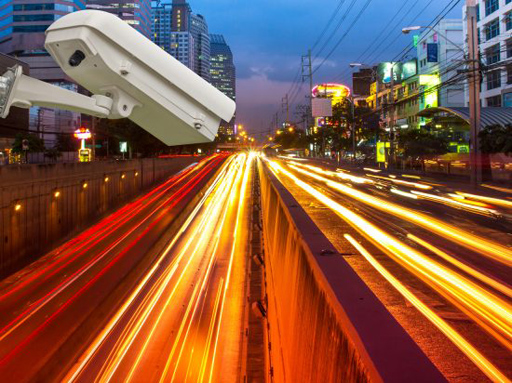Vodafone applies IoT to smart surveillance
- March 11, 2020
- imc

Vodafone has launched Smart Vision, a suite of IoT smart surveillance products designed to enhance security and drive efficiencies for business and public sector users.
The products operate over Vodafone’s IoT network and are 5G ready. They have been developed in partnership with UK smart surveillance provider Digital Barriers, and are suited to a range of sectors including security, construction, manufacturing, utilities, retail and the public sector.
The first products to be unveiled are s body-worn vision camera and City Vision surveillance.
Thecamera provides front line operators – such as police officers, healthcare professionals or field engineers – with the ability to film every incident, to live stream at the touch of a button, and to retrieve footage in HD either onsite or remotely, however difficult the environment. All footage is watermarked and stored securely.
The surveillance productis a connected digital encoder that is easily fitted to an organisation’s existing surveillance infrastructure therefore delivering an intelligent digital product in a cost effective manner. Footage is captured in high definition, and specific incidents can be live streamed where required. Users can monitor footage across their entire estate from a single remote desktop, facilitating the security of utilities, public spaces and buildings. All footage is watermarked and stored securely.
“The Smart Vision range of surveillance brings to life our ambition to provide end-to-end IoT that solves real pain-points for our customers,” said Anne Sheehan, director of Vodafone Business. “Utilising Vodafone’s industry leading network and expertise in IoT, data and analytics, we can enable our customers to enhance security and drive efficiencies as part of their digital transformation journey.”
Smart Vision features include:
- Reliable video streaming even when bandwidth is congested down to 9kbit/s, compared with other cameras that require 600kbit/s to 1.5Mbit/s.
- Minimum delays to live stream that can be more than three seconds on some devices.
- Ability to stream on a range of networks, from 2G to 4G, while others rely on 4G and 5G only.
- Quick recovery from reduced bandwidth availability or data loss, with a typical recovery time of one second.
- Remotely retrieve archived footage, even when streaming live.
- High-resolution detail available even at low bandwidth and while live streaming
- Multiple viewers can watch simultaneously, without crowding the network.
- Secure video streaming with reduced risk of cyber attacks and the ability to disable devices rapidly when required.
Digital Barriers’ products deliver live video streaming over low bandwidths, and include live bodycam, vehicle and safe city products. Typically delivering bandwidth savings of more than 50%, the products are a natural fit with an IoT strategy and make wireless video surveillance a reality. The base technology was designed for security and defence, but has much wider applications. It also includes edge-AI analytics such as enhancing cloud platforms. Existing users include government and commercial organisations in more than sixty countries.





